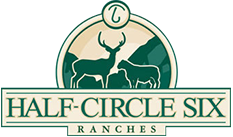I. Introduction of the Dorper
A. History of the Breed
B. What’s in a name?
C. Overview of Breed Standards
II. Characteristics of Dorpers
A. Outstanding Qualities
B. Market Opportunities
C. Special Considerations in Raising Dorpers
III. ADSBS
A. Aims and Goals
IV. Closing and Q & A
I. Introduction of the Dorper
A. “The development of the Dorper sheep breed can justly be described as a true South African success story and today stands as a living tribute to those who originated and improved it.” [i] The search began in the 1930’s for a hardy sheep that would yield a high quality carcass. Native African breeds of sheep that thrived there for years couldn’t produce an acceptable carcass for export to Europe. European breeds of sheep did not thrive and many died in the harsh African environment. When the crossbreeding project began any animals with more than fifty percent European blood fared poorly so it was decided to go with the half blood animals. In 1942 it was decided that the Horned Dorset X Blackhead Persian would be the best cross and selection would begin among these half blood animals. In 1950 the South African Dorper Sheep Breeders’ Society was formed and White Dorper breeders merged into the association in 1964.
B. What’s in a name? Doppler, Dorpler, Dropper, Dorfer? To get the name right let us examine the origin of the name Dorper. In the 1930’s South Africa saw a need for a hardy sheep that could produce a quality carcass on the South African veldt. A project was initiated to cross the Horned Dorset with the Blackhead Persian to produce the desired results. Thus the name Dorper originated from combining the name Dorset with Persian, and pure white animals were appropriately named White Dorpers.
C. South African breed standards are composed of six categories; Conformation, Size or Growth Rate, Distribution of Fat, Color, Covering, and Type. Conformation and size are self-explanatory with the exception that in South Africa bigger is not always better and they select for moderate frame size. Distribution of fat is a category that is necessary because of the fat tail ancestry of this breed. Obviously the animal needs an even fat distribution and not the large deposits that were typical of the indigenous African breeds. Color pattern is something that sets Dorpers apart from other breeds. The ideal color for the Dorper is a white sheep with a solid black head, black hooves, pigmented skin, and no black spots on the body. The White Dorper requires a solid white sheep with pigmented eyelids and an indication of pigment under the tail. Color may also occur on hooves and eyelashes. Covering is the most interesting breed standard in my opinion. “Short, loose, light mixture of hair and wool with a natural clean kemp underline.” This unique covering makes the Dorper adaptable to most any environmental conditions. Type is a combination of all the breed standards, and includes the general appearance and overall impression of the sheep. One of the most impressive facts concerning South African breed standards is that when strictly applied in the show ring the sheep that win shows are the same sheep that excel on pasture.
II. Characteristics of Dorpers
A. The Dorper is characterized by outstanding lamb production, adaptability, hardiness, pasture utilization, and good mothering qualities. Skin from the Dorper is highly sought after for its unique quality and is used in the manufacture of fine leather goods. Dorper lamb is well known for its mild flavor and tenderness. The nonselective grazing habits of the Dorper allow them to maintain their condition when the quality of grass and other forage declines. Dorpers have been known to eat plants that other livestock won’t touch.
B. These sheep carry traits necessary to meet a wide variety of markets. The excellent flavor and tenderness of Dorper lamb give it an advantage over many other breeds. High weaning weights make the Dorper ideal for the lightweight lamb market. This breed has also proven to gain well both on pasture and in the feedlot. Many have erroneously concluded that the Dorper will become to fat if fed in a feedlot. Much available data show the Dorper to be profitable and produce a desirable size carcass when fed and harvested at the proper weight.
C. There are very few special needs of the Dorper. One of the few is the difference in tail docking. The fat tail ancestry of the Dorper requires us to dock or band very early in life. Banding and then cutting three or more days later is one method to remove Dorper tails. The other suggested method is to band and cut the tail below the band immediately to relieve pressure and allow the tail to drop off sooner. Actually the Dorper does not have to be docked but the appearance is so much nicer that most breeders will certainly choose to dock their lambs. Dorpers should be docked close but allowing a “liftable dock”. If a Dorper lamb is carrying a bit longer docked tail the carcass may suffer from increased fat localization. Dorper Sheep are susceptible to many of the same diseases and ailments of other livestock, however Dorpers are hardy and seem resistant to many sheep ailments. Many breeders de-worm their Dorpers less often than other breeds. Experience shows Dorpers to be less susceptible to pinkeye and various infections.
III. ADSBS
A. The American Dorper Sheep Breeders’ Society is dedicated to the mission of supporting the establishment of the Dorper Breed on the North American Continent. The ADSBS was formed in 1996 and provides registration services, organizes educational events, provides promotional materials to its members, publishes a quarterly newsletter and maintains the website www.dorperamerica.org.
Philip Glass
Half-Circle Six Ranches
[i] Taken from Dorpers into the new century by Dolf Lategan.
